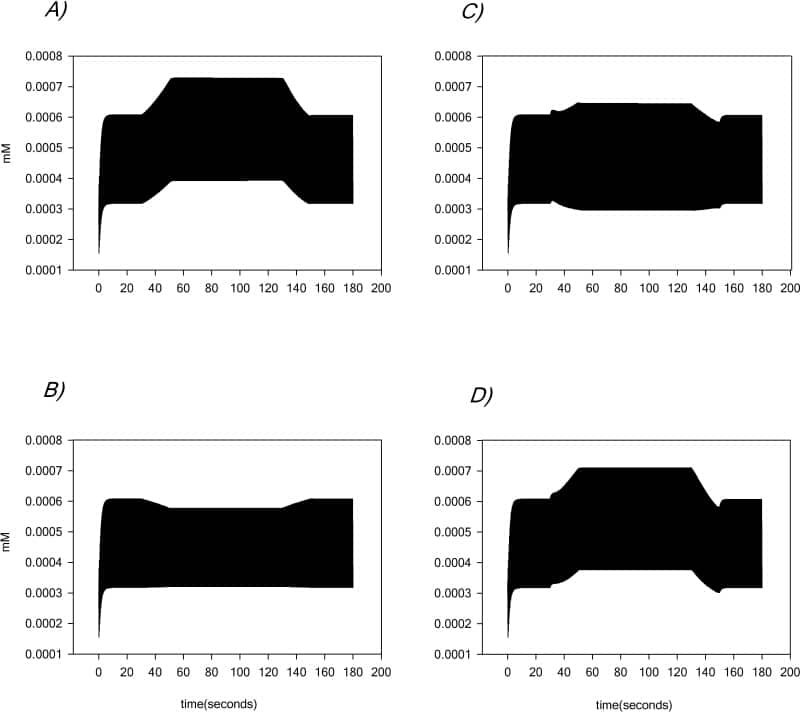The effects of acidosis on intracellular [Ca2+] (Cai) have been studied extensively; acidosis increases diastolic Cai and the amplitude of the systolic Cai transient, although in some studies this is preceded by a small decrease in Cai transient amplitude (Orchard and Kentish, 1990). It has been suggested that these changes result from the effects of acidosis on: (i) Ca2+ influx via Na/Ca exchange, (ii) release of Ca2+ from the sarcoplasmic reticulum and (iii) intracellular Ca2+ buffering (Orchard and Kentish, 1990; Orchard, 2004). The relative importance of each of these components is difficult to establish experimentally. We have therefore used a model of the rat ventricular myocyte based on that described by Pandit et al (2001) to investigate whether the integrated response to these changes is compatible with that observed experimentally during acidosis. Figure 1 shows the response of the model to three effects of acidosis suggested by experimental data: (A) Increasing intracellular Na+ from 11 mM to 15mM, by increasing background Na+ conductance, thus altering Na+/Ca2+ exchange activity, increased diastolic Cai and Cai transient amplitude. (B) Decreasing the sensitivity of the ryanodine receptor to trigger Ca2+, by decreasing the rate constant for channel opening by a factor of 0.25, decreased Cai transient amplitude. (C) Decreasing Ca2+ binding to troponin-C, by increasing the off-rate of Ca2+ from troponin by a factor of 4.0, decreased diastolic Caibut increased Cai transient amplitude. (D) Combining these three changes increased diastolic Cai and Cai transient amplitude. All changes were made with a time course similar to the change of intracellular pH recorded experimentally; the responses are similar to those recorded experimentally in response to acidosis, consistent with the idea that they underlie the changes of Cai observed during acidosis.
University of Oxford (2004) J Physiol 561P, PC7
Communications: A COMPUTATIONAL MODEL OF THE EFFECTS OF ACIDOSIS ON INTRACELLULAR Ca2+ IN RAT VENTRICULAR MYOCYTES
Langham,Elise ; Clayton,Richard ; Pasek,Michal ; Orchard,Clive H.;
1. School of Biomedical Sciences, University of Leeds, Leeds, United Kingdom. 2. Department of Computer Science, University of Sheffield, Sheffield, United Kingdom. 3. Department of Physiology, Masaryk University, Brno, Czech Republic.
View other abstracts by:
Fig 1: Cai during the changes described above. Each run begins with 30 s control followed by the desired change made over 20 s followed by 80 s at the maximum level of that change. The change is then gradually reversed over 20 s followed by 30 s control.
Where applicable, experiments conform with Society ethical requirements.

